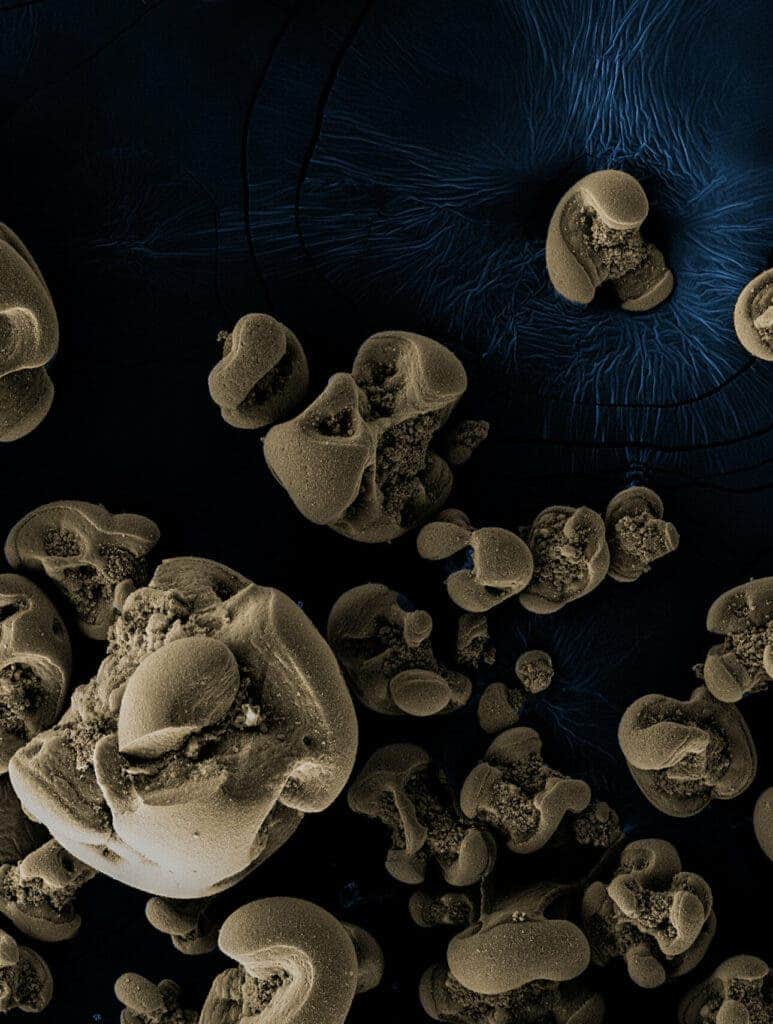
His dark material
One regular day, Jared Leadbetter left a jar soiled with manganese to soak with tap water in his Caltech office sink. Upon his return from fieldwork several months later, the environmental microbiology professor was surprised to find the jar was coated in some dark material.
“I thought, ‘What is that?'” he said. “I started to wonder if long-sought-after microbes might be responsible, so we systematically performed tests to figure that out.”
Turns out, Leadbetter had identified bacteria that consume the metal for energy, something that has been theorized for over a hundred years but which has only recently been confirmed.
The black coating that the scientist found inside the walls of his glassware was in fact oxidized manganese — a dark, clumpy substance that is very commonly found in nature, particularly in subsurface deposits and water-distribution systems.
“There is a whole set of environmental engineering literature on drinking-water-distribution systems getting clogged by manganese oxides,” says Leadbetter. “But how and for what reason such material is generated there has remained an enigma. Clearly, many scientists have considered that bacteria using manganese for energy might be responsible, but evidence supporting this idea was not available until now.”
Scientists have been aware for some time that some bacteria degrade pollutants like manganese oxide, through a process called bioremediation. The microorganisms reduce the manganese oxide, meaning they donate electrons, similarly to how humans use oxygen to breathe.
It’s striking when you realize that it is also bacteria that likely form most of the manganese oxide in the first place.
Lurking in the waters, eating metal
The two newly found microorganisms, a type of Nitrospirae and betaproteobacterium that lurk in groundwater and tap water, strip electrons off of manganese to convert carbon dioxide into biomass — a process that scientists call chemosynthesis.
“The bacteria we have discovered can produce it, thus they enjoy a lifestyle that also serves to supply the other microbes with what they need to perform reactions that we consider to be beneficial and desirable,” says Leadbetter.
In order to be sure that microorganisms were indeed oxidizing the manganese, the researchers coated more jars with the substance and then sterilized some of them with scorching steam. Even a year later, the sterilized flasks didn’t darken at all, while those that hadn’t been steamed were smudged.
Manganese is one of the most abundant metals on Earth. We actually regularly ingest this metal from foods such as nuts and tea, which our bodies use to process fats or form bone. It’s then not that surprising to learn that bacteria use the metal for energy. Another microorganism, a soil-living, rod-shaped bacterium called Cupriavidus metallidurans, is known for eating toxic metals and ‘pooping’ gold nuggets as a byproduct.
Manganese oxide also deposits on the seafloor under the form of nodules. These grapefruit-sized metallic balls have been identified since the days of the HMS Challenger in the 1870s. Today, mining companies are interested in harvesting these nodules since rare metals are often found inside them.
However, little is understood about how the metal balls form in the place. The new study suggests that perhaps other microorganisms that are adapted to seawater rather than freshwater may be responsible.
“This underscores the need to better understand marine manganese nodules before they are decimated by mining,” says postdoctoral scholar Hang Yu, co-author of the new study alongside Leadbetter.
“This discovery from Jared and Hang fills a major intellectual gap in our understanding of Earth’s elemental cycles, and adds to the diverse ways in which manganese, an abstruse but common transition metal, has shaped the evolution of life on our planet,” says Woodward Fischer, professor of geobiology at Caltech, who was not involved with the study.
The findings were reported in the journal Nature.






